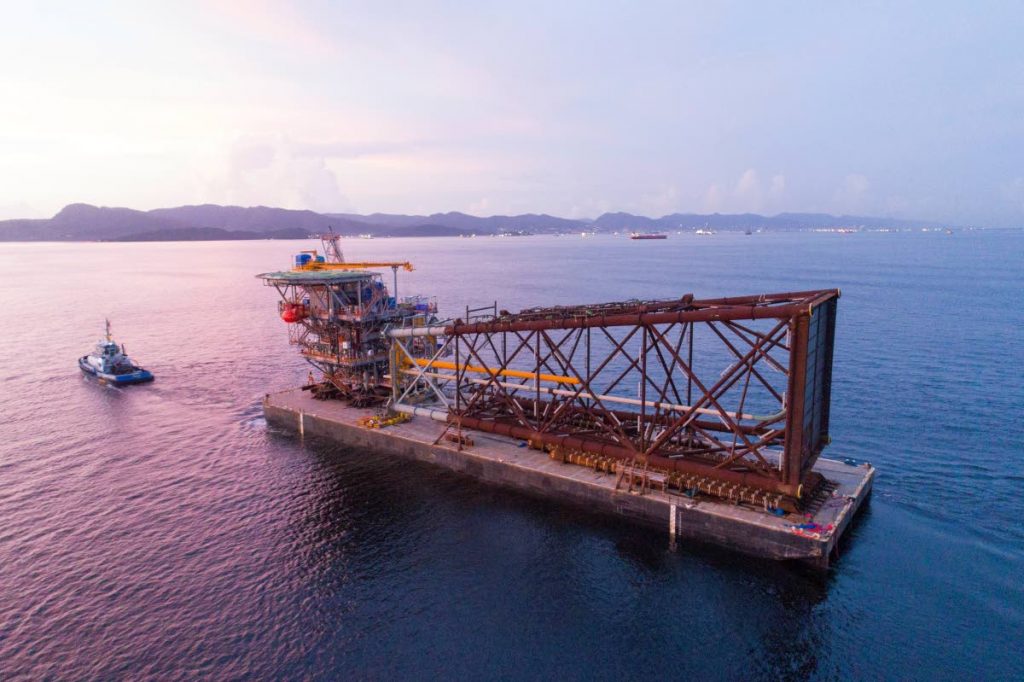Mixed fortunes for TT

External risks, including political uncertainty in Venezuela, Brexit, trade tensions between China and the US, volatile energy commodity process and swings in financial markets, could affect TT’s economic outlook for 2019, the Central Bank has said. Domestic macroeconomic management, then, will need to be closely coordinated and alert in dealing with a rapidly evolving external landscape, the bank said in its Economic Bulletin for January 2019.
On the domestic front, the economy should receive a boost in 2019 from the anticipated startup of BPTT’s Angelin gas platform during the first quarter and other energy projects in the pipeline, the Central Bank has said. This will complement the boost to the energy sector from the Juniper field, another BPTT project, which came on-stream in the second half of 2017.
Non-energy activity in 2019 is likely to be gain momentum from government spending, notably from the seasonal increase in government spending on capital projects in the second half of the fiscal year (April-September). The bank also warned that labour market conditions, which are already soft, could remain challenging, noting a need for new skills among workers in the face of “more intense competition” domestically and externally. Inflation is expected to remain low but the forecast harsh dry season could lead to a rise in the cost of local produce, the bank said.
Beyond that, the economy does appear to have stabilised, but it’s neither growing exponentially nor regressing into recession. As usual, the country is dependent on the success of the energy sector, which appears to have been dampened because of maintenance in the latter half of last year.
According to its indicators, the bank said maintenance work by some companies and the ongoing maturation of oil fields dampened the growth momentum in the energy sector in the third quarter of 2018. On the non-energy side, construction, which had picked up in the second quarter of 2018, seemed to have reversed that trend in the third. Distribution and banking grew moderately, while manufacturing remained fairly stable.
Natural gas output rose by one per cent in the third quarter of 2018 (year-on-year). Exploration and production activity on the whole was marginally lower, as there were also slips in crude oil production (11.3 per cent) and in-depth drilling and rig days recorded. Liquefied natural gas (LNG) production increased moderately (1.2 per cent) despite maintenance work at Train 2 in September. It’s still too early to gauge the impact of the closure of the Pointe-a-Pierre refinery, which was shuttered on November 30, 2017. Refinery throughput (in the third quarter 2018), which was down by 7.0 per cent may have been affected by the winding down of operations at the Petrotrin refinery, the bank said, while natural gas liquids output is being affected by the production of increasingly ‘drier’ natural gas. Petrochemical output was also generally weaker during the period, the result of sustained gas curtailments. Methanol production was affected by outages at the M5000 and Atlas methanol plants while downtime at Nutrien (formerly PCS Nitrogen) hampered the production of ammonia.
Preliminary data for the fourth quarter suggest that activity in the energy sector continued to be mixed with strong influences of maintenance works and temporary shutdowns on output of some products.
Indicators in the non-energy sectors in the third quarter of 2018 is mixed, the bank said, suggesting recovery outside of the energy sector is yet to take hold. Based on information on lower local sales of cement as well as reduced production of mined aggregate, the construction sector is estimated to have declined 6.4 per cent in the third quarter of 2018.
Output in the manufacturing sector is estimated to have been relatively flat (-0.2 per cent), mainly owing to lower reported activity in the assembly industry, chemical manufacturing industry and miscellaneous manufacturing, although activity increased in the food, drinks and tobacco industry (3.6 per cent).
The transport, storage and communications sector declined by 1.6 per cent, because of lower levels of activity within the taxi (4.5 per cent), truck (6.7 per cent) and airline (0.9 per cent) sub-industries. Together, these declines outweighed an eight per cent improvement in port activity during the third quarter of 2018.


Comments
"Mixed fortunes for TT"